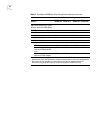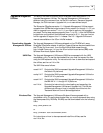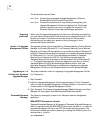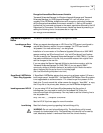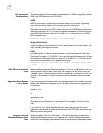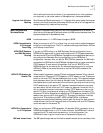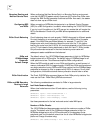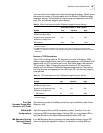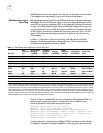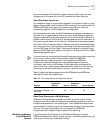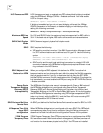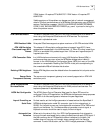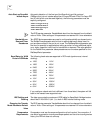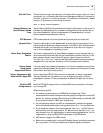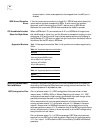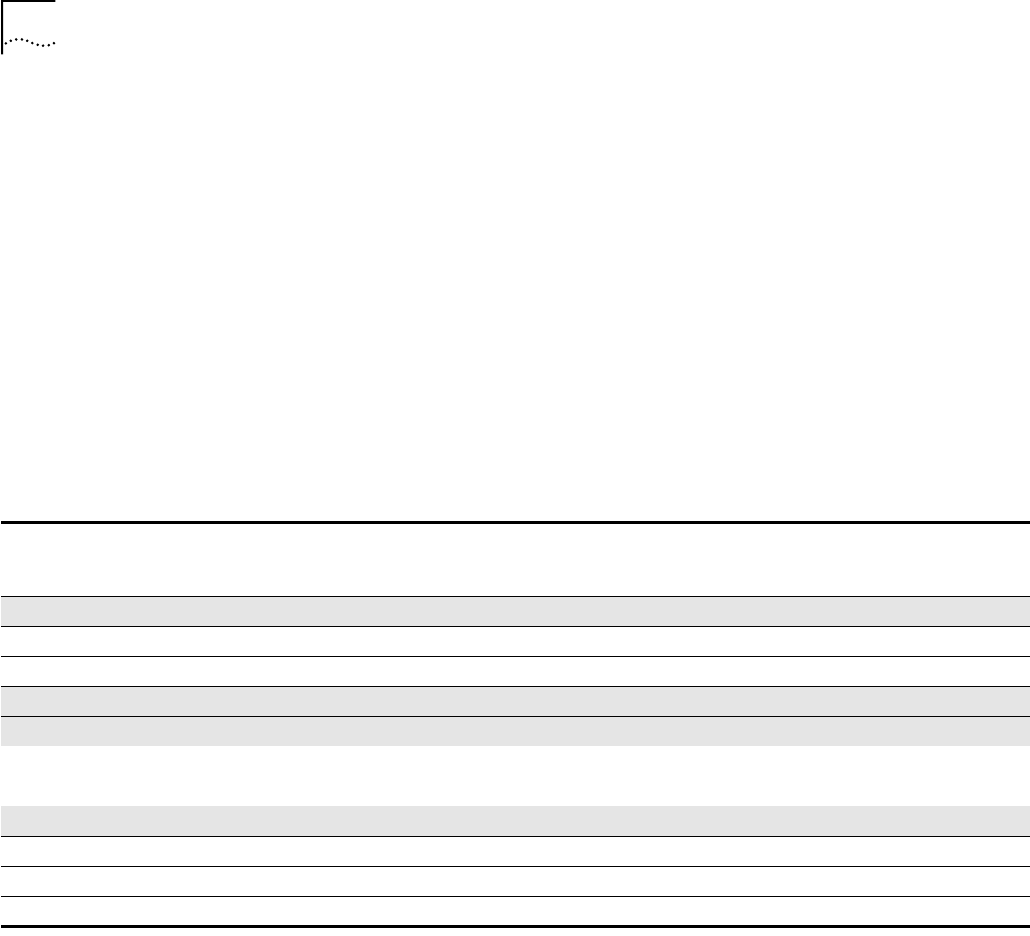
50
NetBIOS sessions occurs if the primary link fails and the redundant link is activated.
If this happens, end users need to log on and initiate another session.
IBM-Related Services in
Token Ring
IBM-related services such as DLSw and APPN are affected by parameter settings in
the BRidge, SR, and LLC2 Services. Table 11 shows the required settings in source
route (SR), source route transparent (SRT), and transparent bridging environments
for each of the IBM-related services. When a NETBuilder bridge/router token-ring
port is configured for both an IBM service such as DLSw and transparent bridging
or SRT bridging, connectivity problems and frame copy errors can occur. For this
reason, 3Com recommends configuring token ring ports for source route only
when possible.
In Table 11, DLSw refers to data link switching, and LNM refers to LAN Net
Manager. The settings are shown in abbreviated form. 3Com-recommended
configurations are shaded and shown in bold.
The row in Table 11 labeled DLSw with port configuration SR represents DLSw in a
source-route-only port configuration. The entries in this row expand to the
following Enterprise OS software configuration syntax:
SETDefault -BRidge CONTrol = Bridge | NoBridge
SETDefault !<port> -SR SrcRouBridge = SrcRouBridge
SETDefault !<port> -BRidge TransparentBridge = NoTransparentBridge
SETDefault !<port> -SR RingNumber = <number> (1–4095) | 0x<number> (1-FFF)
SETDefault !<port> -SR BridgeNumber = <number> (0-15) | 0x<number> (0-F)
SETDefault !<port> -SR RouteDiscovery = LLC2
SETDefault !<port> -LLC2 CONTrol = Enable
In this configuration, global bridging (-BRidge CONTrol) can be set to either Bridge
or NoBridge. Transparent bridging is disabled on token ring ports, source routing
Table 11 IBM-Related Feature Settings for Token Ring Ports
Services
Port
Configurat
ion
Source Route
Bridging
(-SR SRB)
Transparen
t Bridging
(-BR TB)
Bridging
(-BR CONT)
Route
Discovery
(-SR RD)
LLC2 CONTrol
(-LLC2 CONT)
Frame Copy
Errors
Bridging only SR SRB NTB B NoLLC2 Disable None
Bridging only SRT SRB TB B NoLLC2 Disable Low # Possible
Bridging only T NSRB TB B NoLLC2 Disable Low # Possible
LNM SR SRB NTB B LLC2 Enable None
DLSw SR SRB NTB NB | B LLC2 Enable None
DLSw SRT SRB TB NB
*
| B
*
LLC2 Enable High # Possible
DLSw T NSRB TB NB
*
| B
*
NoLLC2 Enable High # Possible
APPN SR SRB NTB NB | B LLC2 Disable None
APPN SRT SRB TB NB | B LLC2 Disable None
APPN T NSRB TB NB | B LLC2 Disable None
Default Setting SRT SRB TB NB NoLLC2 Disable None
* 3Com recommends that you disable global bridging for this configuration. However, with global bridging disabled, the token-ring hardware does not
filter unwanted transparent packets. The token-ring hardware copies each transparent packet for processing by the Enterprise OS software. This can
generate many frame copy errors (see Token Ring Frame Copy Errors below for more information.) If you are seeing many Frame Copy Errors, consider
setting global bridging on, which allows the hardware to learn and filter unwanted transparent packets. Since DLSw cannot block bridging loops, you
must insure that none exist. As an alternative, you can prevent the bridge from forwarding by entering the following command: SETDefault -BRidge
CONTrol = NoForward. The NoForward parameter allows the hardware to filter unwanted transparent packets, allows DLSw to send and receive LLC2
SNA and NetBIOS packets, but prevents these and other packets from bridging.



